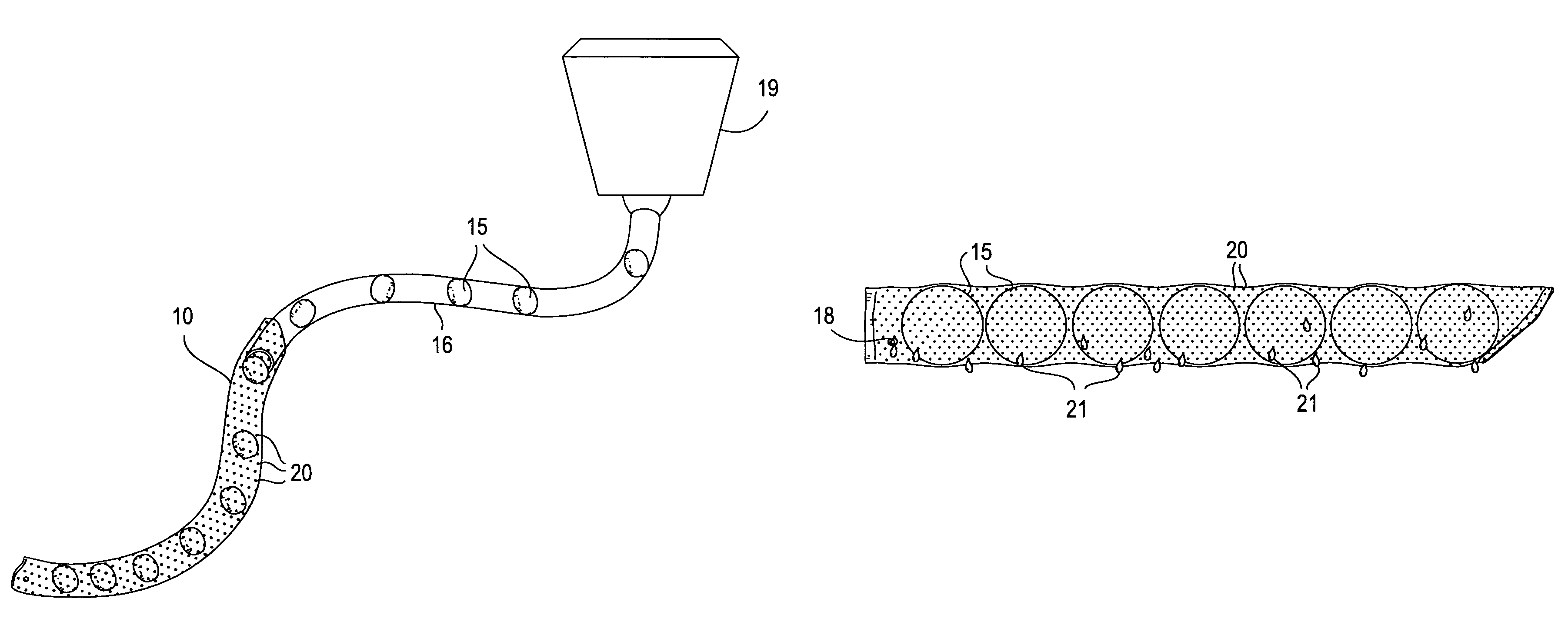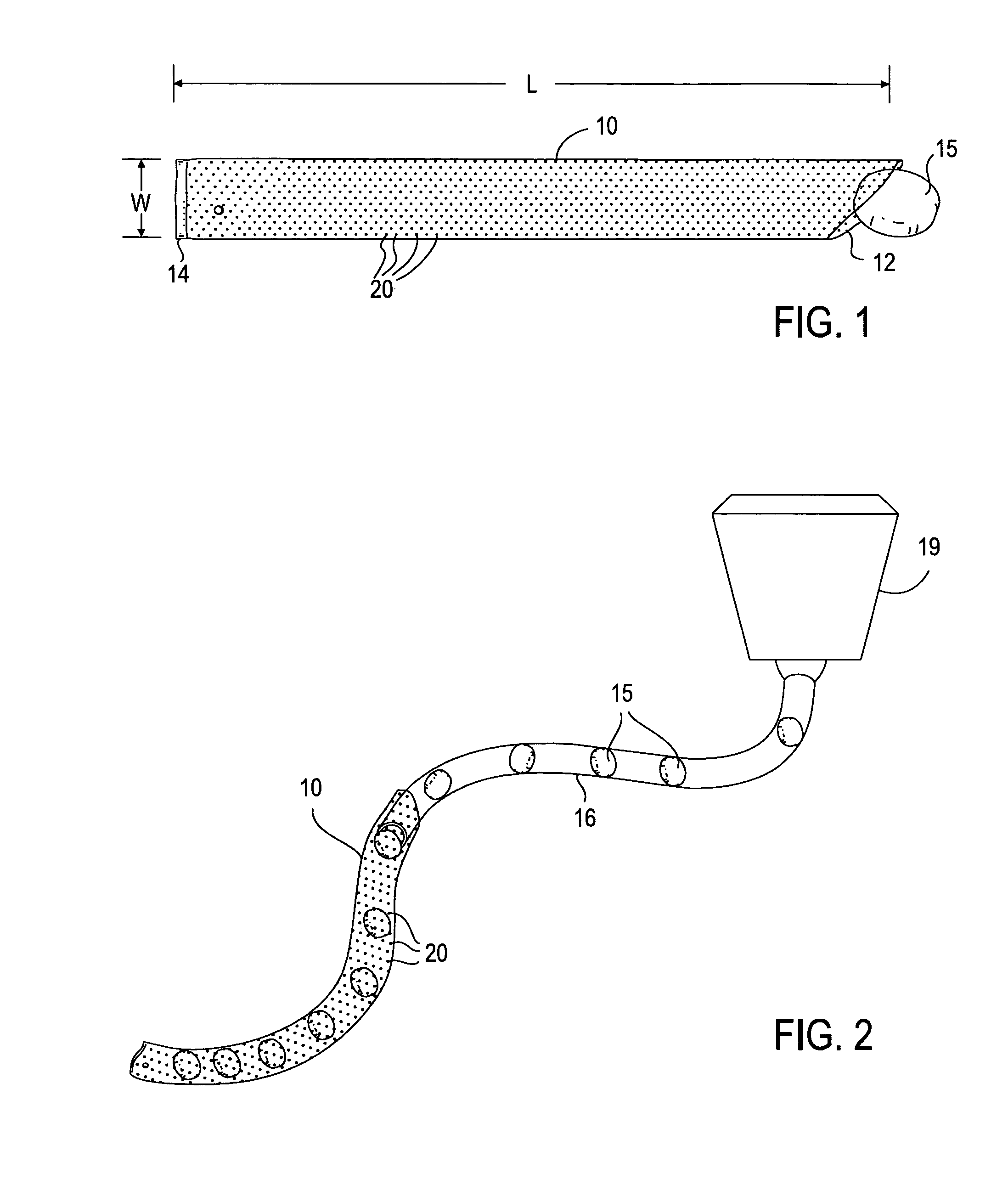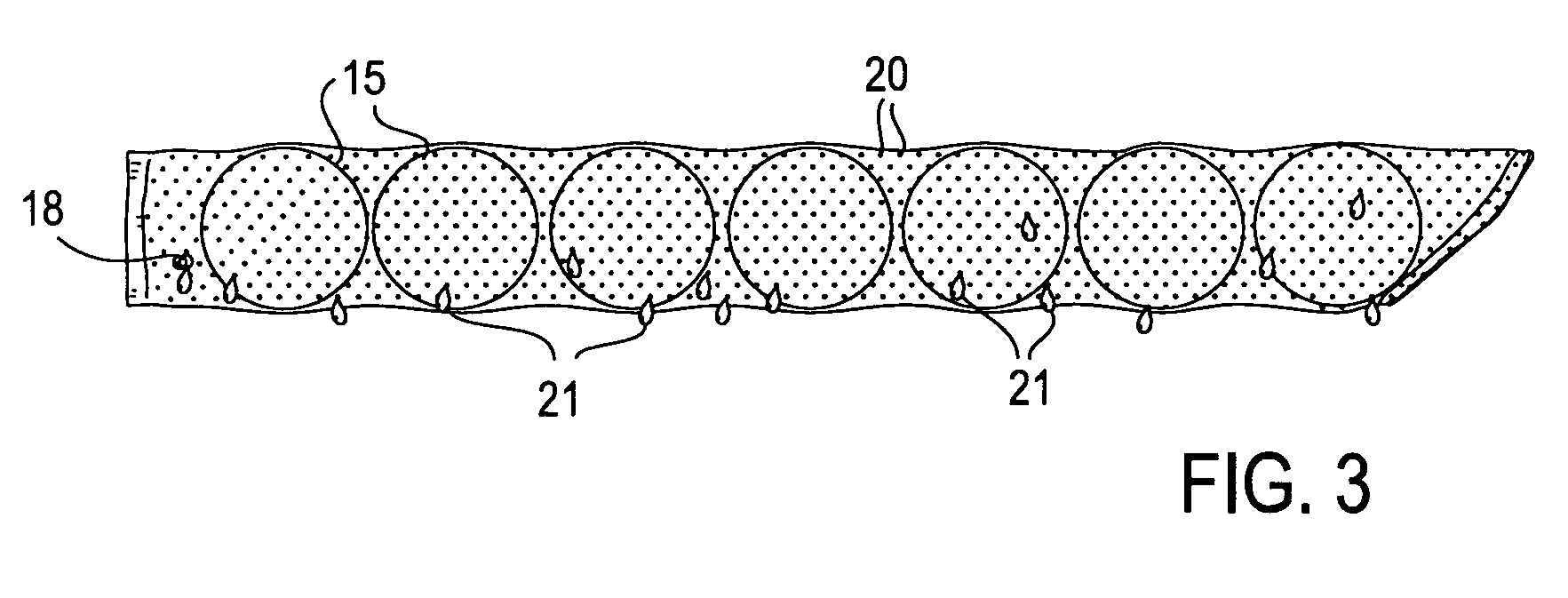Method for packaging scallops in a tubular bag
a tubular bag and scallop technology, applied in the field of tubular bag packaging of scallops, can solve the problems of easy loss of moisture, and inability to hold the shell closed, and achieve the effect of reducing air pressure and easy entry into the bag
- Summary
- Abstract
- Description
- Claims
- Application Information
AI Technical Summary
Benefits of technology
Problems solved by technology
Method used
Image
Examples
Embodiment Construction
[0008]For a better understanding of the present invention together with other and further objects, advantages and capabilities thereof, reference is made to the following disclosure and appended claims in connection with the above described drawings. FIG. 1 illustrates a first preferred embodiment of the present invention comprising an elongate, thin film plastic bag used specifically for the presentation and preservation of scallop medallions 5. The bag 10 is cylindrically shaped thin film plastic bag have a tapered or angle top edge 12 that is open, and a sealed bottom edge 14. The angled top edge 12 facilitates opening the bag and also makes it easier to place the bag 10 on the end of a pipe or spout 16 of a shucking machine 19. Machines that shuck scallops, oysters, clams, and the like are well known in the art and a description of such is beyond the scope of the present patent, but such machines traditionally include a delivery system that includes a pipe 16 having a diameter s...
PUM
| Property | Measurement | Unit |
|---|---|---|
| diameter | aaaaa | aaaaa |
| length | aaaaa | aaaaa |
| diameter | aaaaa | aaaaa |
Abstract
Description
Claims
Application Information
 Login to View More
Login to View More - R&D
- Intellectual Property
- Life Sciences
- Materials
- Tech Scout
- Unparalleled Data Quality
- Higher Quality Content
- 60% Fewer Hallucinations
Browse by: Latest US Patents, China's latest patents, Technical Efficacy Thesaurus, Application Domain, Technology Topic, Popular Technical Reports.
© 2025 PatSnap. All rights reserved.Legal|Privacy policy|Modern Slavery Act Transparency Statement|Sitemap|About US| Contact US: help@patsnap.com



